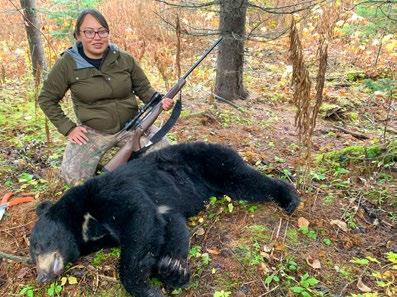
6 minute read
Predator Management Policy & Framework
SUCCESSFUL BEAR HARVESTS BY TAHLTANS
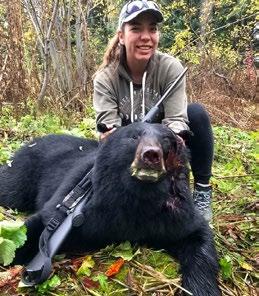
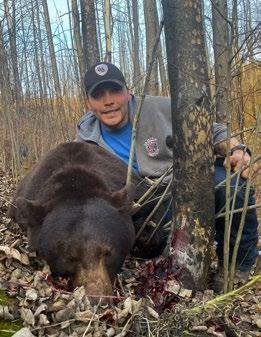
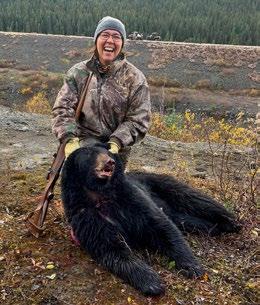
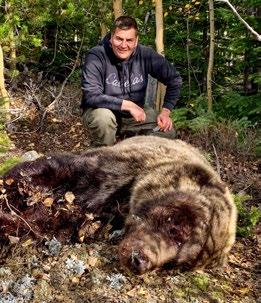
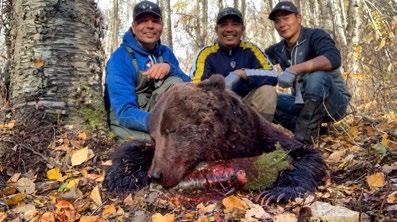
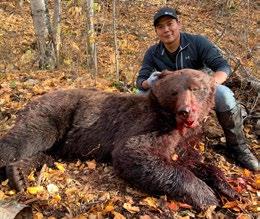
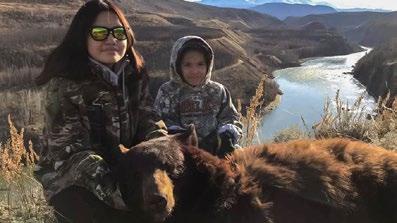
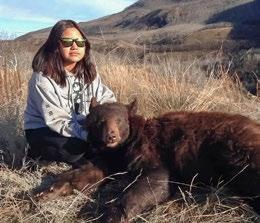
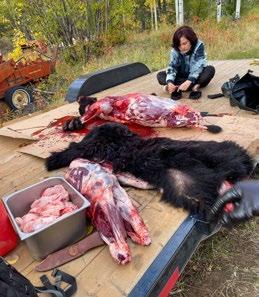
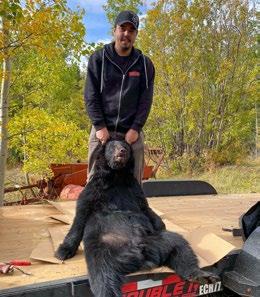
2
5 3 8
10 9
11 1/2. Ann Ball 3. Clements Brace 4/5. Jordan Hawkins 6/7. Mackenzie Dennis 8. Denise Nole
9. Kamaria Dennis 10. Terri-Lynn Mroch 11. Daniel Ball 12/13. Kelso Marion
Tahltan Guide & Outfitters
Association Message
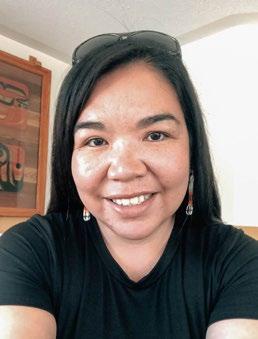
Shana Dennis
President, Tahltan Guide & Outfitters Association For those who do not know me, my name is Shana Dennis. I am a member of the Tahltan Nation from the Quock Family. My grandparents are Bobby and Gladys Quock, and Fletcher and Doreen Day. I have been President of the Tahltan Guide & Outfitters Association (TGOA) since February 2020 and a Board Director for the Guide Outfitters Association of BC (GOABC).
The COVID-19 pandemic has had a tremendously negative impact on our industry and created trying times for a lot of outfitters throughout BC and the world. The TGOA worked hard on a COVID-19 plan that was approved by Tahltan Leadership and would have been implemented by all TGOA member outfitters in the area had we been able to hunt. Unfortunately, hunting did not happen this year, so we are hoping for a better 2020-2021 season. The local frontline workers and community emergency committees have done an amazing job ensuring the safety of community members through travel advisories and education. We acknowledge a job well done through these unfamiliar times.
The recent implementation of the Tahltan Nation Predator Management Policy by the Tahltan Central Government is a positive step in ensuring the future of wildlife in Northern BC. They are applauded for taking this bold step.
The TGOA is pleased to announce Chief Rick McLean as the winner of the Fletcher Day Award for 2020. Chief Rick is recognized for his many years of dedication and support for being a wildlife advocate within Tahltan Territory. He was one of the founders of TGOA and the Tahltan Wildlife Guardian Program we see today. Rick continues to be an advocate, and we would like to congratulate him on being selected to sit on the provincial government’s Minister’s Wildlife Advisory Council established in September 2020. We extend our congratulations as well on his wedding and Mēduh for his years of service as Chief of the Tahltan Band. His work and legacy will live on and have positive impacts for generations to come.
MOVING TOWARD SHARED MANAGEMENT OF WILDLIFE
3 Nations & British Columbia Collaborative Stewardship
Forum Update
Feddie Louie and Linda Robertson
Currently the 3 Nations Society and Government of British Columbia are in the final year of a three-year Collaborative Stewardship Forum pilot project. The 3NBC Forum, comprised of members from BC, Taku River Tlingit, Tahltan, Kaska, and the 3 Nations Society is focused on moving toward shared management of wildlife. Work on securing an additional mandate to advance co-management on wildlife in the collective territories is being sought with each of the governments involved in the program.
A key component of the relationship is the support of each Nation’s Guardian Program. The 3NBC Forum continues to support each Nation’s Guardian Program with continued coordination in on-the-ground monitoring of licensed hunters and recreational land users in the collective territories. Coordination, monitoring and capacity development between programs is being done through the work of the 3 Nations Guardian Coordinator, Tanya Ball. This has included supporting additional employment for seasonal Guardians, continued training, and exchange trips between Nation Guardian Programs. There is additional focus on information gathering to inform the development of community-based moose management plans. Also, through the 3NBC Forum, specific Guardianled projects important to each Nation are occurring. These include moose surveys of the Klappan and Liard Basin (in December 2020), sheep surveys in the Atlin area (planned in winter of 2021), Edziza mountain goat surveys (in the winter of 2021), and ecosystem monitoring (in 2021).
Collectively the 3 Nations and BC are also supporting the collaborative development of community-based moose management plans for the Atlin, Klappan, and Liard Basin moose populations in 2020. Further information on how you can be involved will be provided soon.
JADE BOULDER SHEEP PROJECT
Above: Clements Brace collecting samples with a Stone sheep seen in the background. Below-right: Sheep monitoring collar. The Jade Boulder Sheep Project was initiated in February 2017 to evaluate the seasonal habitat use, mortality factors and interactions of Stone’s sheep with the Jade Boulder Road (JBR) during seasonal movements.
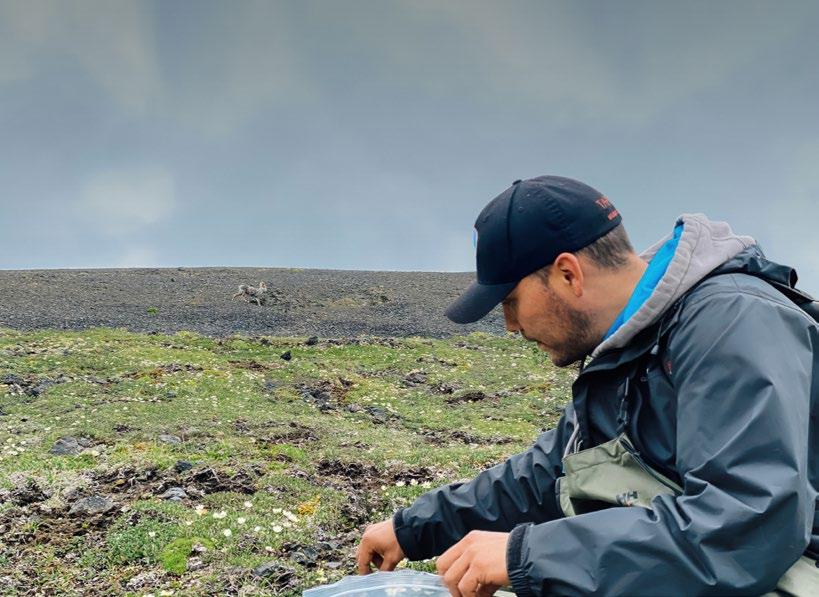
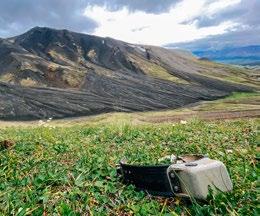
It also serves to promote community stewardship of the sheep, a joint effort between TGOA and TCG with funding from several sources including the Wild Sheep Foundation and support from the Ministry of Forests, Lands, Natural Resource Operations and Rural Development. The importance of understanding the population was initiated from traditional knowledge reports of a seasonal movement across an active industrial road, which made the sheep vulnerable to predation or other stresses when encountering traffic. This movement was also evidenced from past sheep inventory which identified a significant shift in distribution of sheep from the south to north side of the road in summer.
The project included collaring and monitoring of ten Stone’s sheep ewes, evaluating mortality, inventorying the population, assessing habitat use and forage quality, and monitoring traffic and sheep stress along the JBR. This effort was associated with a health and physiology study conducted to assess the sheep. The project was conducted over three years and the final data are being collected this fall, with analysis and reporting well under way. To date, key findings have included identifying important seasonal ranges (i.e. winter, lambing, and summer ranges), key movement corridors and timing of JBR crossing by sheep in June/July and again in August/ September. It also suggests there is a threshold of traffic volumes that may influence sheep behaviour, and fecal cortisol stress indicators also indicate that at current traffic levels, sheep are at heightened stress when crossing the JBR. Mortality was found to be a combination of predation and accidents, with some years having much greater mortality than others.
THE RESULTS FROM THIS STUDY WILL BE USED TO ENHANCE SHEEP MANAGEMENT BY:
protecting key habitats and movement corridors for the JBR population
developing management strategies to regulate and mitigate use of access roads, including the JBR, to limit stress on sheep
protecting special features, such as significant mineral licks, which have been identified as important to these sheep
THE PROJECT IS EXPECTED TO HAVE ADDITIONAL RESULTS THAT MAY BE USED FOR MANAGEMENT OF OTHER SHEEP POPULATIONS:
developing habitat maps for identifying key sheep habitat in other areas
developing the use of fecal pellet groups for monitoring population influence from human activity
identifying key micro and macro nutrients that enhance habitat value
identifying a series of management actions to reduce impacts from roads and other human developments in sheep range areas
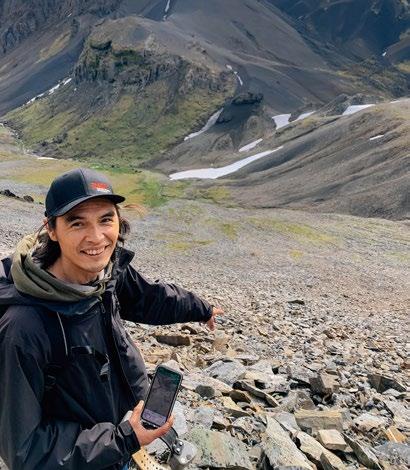
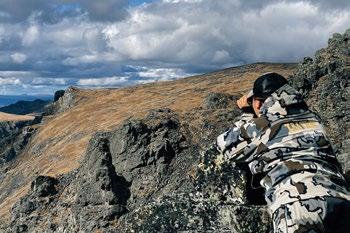
Top: Jarett Quock locating Stone sheep collars. Above: Brianna Tashoots scanning for Stone sheep.










